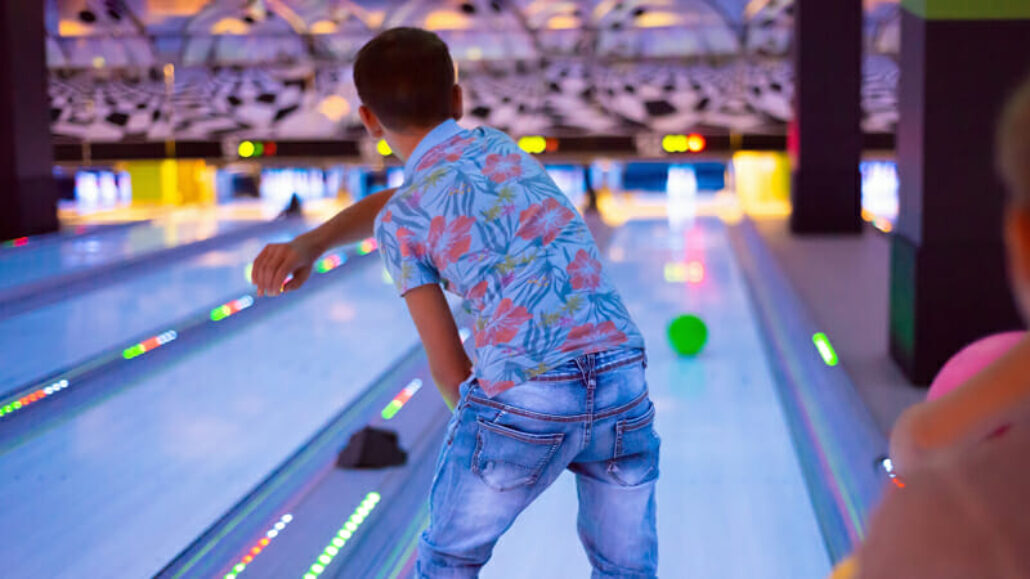A clicking sensation in your shoulder could signal a SLAP tear.
A young athlete throws a ball and feels clicking in the shoulder. That sensation of clicking could be what orthopedic upper extremity specialists call a SLAP tear. Fellowship-trained shoulder and hand surgeon, Dr. J.P. Delaney explains this condition and describes the people most susceptible to this injury. He also reviews both conservative and surgical treatment options.
What is a SLAP tear?
“The term SLAP tear stands for superior labral anterior posterior tear,” explains Dr. Delaney. “I like to explain the anatomy of the shoulder joint by comparing it to our hip joint. Both the shoulder and hip joints are ball and socket joints. However, unlike the hip joint, which has a very deep socket, the shoulder joint has a very shallow socket. From a boney standpoint, this makes our shoulder less stable than our hip. Both the hip and shoulder have a labrum. The labrum is a soft fiber cartilage tissue structure around the socket that helps with stability. The biceps tendon is anchored to the shoulder in two places. One of these anchors is positioned on the labrum at the top of the shoulder. This is where you can get a SLAP tear. It happens at the top of the shoulder where the biceps tendon is anchored to the labrum.”
Symptoms of a SLAP tear
“Pain in the shoulder is the most common symptom,” says Dr. Delaney. “You are most likely to experience pain when you move your arm overhead or out, during rotation motions, or when you attempt to lift heavy objects. There can also be weakness secondary to the pain. Sometimes, there is night pain, but night pain is more common with a rotator cuff tear. You may also feel a clicking or catching sensation. Biomechanically, this injury should not limit your movement or make your shoulder feel unstable. Of course, if your shoulder hurts, you aren’t going to move it as much—but the injury itself doesn’t inhibit shoulder motion.
Degrees of tear severity
“These tears have a classification system,” notes Dr. Delaney. “They can either be stable or unstable. The factors influencing the tear classification include the size of the tear, the location of the tear, and how much the tear affects the biceps insertion. Usually, larger tears affecting the biceps tendon are more pathologic. That means they are harder to repair and harder to heal. Oftentimes, when these injuries are totally unstable, they are not repairable.”
People at risk for a SLAP tear
“This injury can be sudden and acute, or it can occur gradually over time,” explains Dr. Delaney. “Young athletes in competitive sports that require a lot of throwing are most susceptible to acute labrum tears. But I see this injury in older people as well. Over time, the labrum can wear out. As the tissues become weaker, the pulling of the bicep tendon at the point of attachment can cause a degenerative tear.
Conservative treatment options
“Oftentimes, if you have a stable SLAP tear, you won’t need surgery,” says Dr. Delaney. “Conservative treatment is an especially good option for older patients with degenerative tears. Typically, they put fewer demands on their shoulders, so rest and activity avoidance aren’t going to limit their overall lifestyle. I’ll talk with these patients about avoiding activities that aggravate the injury. With a little rest, time, and physical therapy, the pain often subsides.”
Dr. Delaney notes that conservative treatment may not be sufficient for younger patients with this injury. “If you are younger, you are probably putting higher demand on your shoulders with your everyday activities. This is particularly true for young competitive athletes. Even with a stable SLAP tear, conservative treatment may not be enough to rehabilitate these patients.”
Surgical treatment options
“In cases where conservative treatment is not appropriate, I’ll talk with patients about surgical repair options,” explains Dr. Delaney. “Generally, our surgical goal is to clean up the torn tissue and tack the biceps tendon back down in the position where it was torn off.” Dr. Delaney notes that patients have two surgical options, depending on factors including the severity of the tear.
- A biceps tenodesis. “A tenodesis is probably more common procedure done to repair SLAP tears,” explains Dr. Delaney. “In this procedure, we cut the biceps tendon at the point where it inserts into the labrum. Then we clean up the tear, so it doesn’t hurt you anymore. Finally, we surgically move the insertion of the biceps further down into the head of the proximal humerus, or front of the shoulder joint, so that the biceps tendon has a stable structure to pull against that provides strength and resistance.”
- A biceps tenotomy. “With a tenotomy, we cut the biceps tendon from the labrum and allow it to retract down into the arm. Most appropriate patients tolerate this surgery well, but there is risk of what’s called a Popeye deformity. This deformity develops when the severed biceps forms a ball in the upper arm. About 15 percent of tenotomy patients experience some cramping in the biceps tendon.
Factors influencing surgery choice
“Whether or not we do a tenodesis to tack down the biceps is dependent on a number of considerations,” notes Dr. Delaney.
Age of the patient: If a patient is older, we are less likely to recommend a tenodesis and tack down the biceps,” says Dr. Delaney. “Functionally, the strength of the biceps is less important for elderly patients because they aren’t likely to place high demands on the muscle. Younger, more active patients who do use their arms more will probably be happier with their outcome if they have a tenodesis.”
Surgery tolerance: “Tacking down the biceps involves a bit more surgery,” notes Dr. Delaney. “A tenodesis requires a second incision to tack down the biceps. In addition, we usually put in another piece of material to act as an anchor for the repair. Putting more material into the body makes tacking a more invasive procedure.”
Aesthetics: “Some patients feel strongly about the aesthetics of the repair,” points out Dr. Delaney. “If they don’t want to risk the Popeye deformity, they’ll opt to have the biceps surgically tacked down.”
Cramping risks: “We follow outcome data closely,” states Dr. Delaney. “As a result, we’ve noted that the cramping side effect associated with tenotomies is being reported more frequently. Of course, we want to try and avoid any cramping issues. This is another reason that we provide tenodesis for the majority of our patients.”
Risks associated with nontreatment
“If you choose not to treat this injury, you are going to have continued pain,” says Dr. Delaney. “However, a SLAP tear is not going to progress to another shoulder problem as the result of failure to treat. The greatest risk with nontreatment is that the tendon will eventually rupture completely and retract down into the arm.”
Summit Orthopedics provides personalized hand and wrist expertise
The function of our hands is integrated through our wrists and arms to our shoulders; a problem anywhere along our arm may have a significant impact on hand function and quality of life. If you experience an injury or uncomfortable symptoms, our fellowship-trained shoulder, hand, and wrist surgeons are here to help. Summit physicians receive the highest levels of training and exclusively provide individualized care for conditions of the hand, wrist, and elbow.
Start your journey to better function and less pain. Find your hand expert, request an appointment online, or call us at (651) 968–5201 to schedule a consultation.
Summit has convenient locations across the Minneapolis-St. Paul metro area, serving Minnesota and western Wisconsin. We have state-of-the-art centers for comprehensive orthopedic care in Eagan, MN, Plymouth, MN, Vadnais Heights, MN, and Woodbury, MN, as well as additional community clinics throughout the metro and southern Minnesota.
More resources for you
- Meet Dr. Delaney
- Read about simple habits for shoulder health
- Learn more about nonsurgical treatments for shoulder pain
- My Finger Is Numb. What Does That Mean?
- Learn how to wrap your wrist
- Pregnancy and Carpal Tunnel Syndrome

